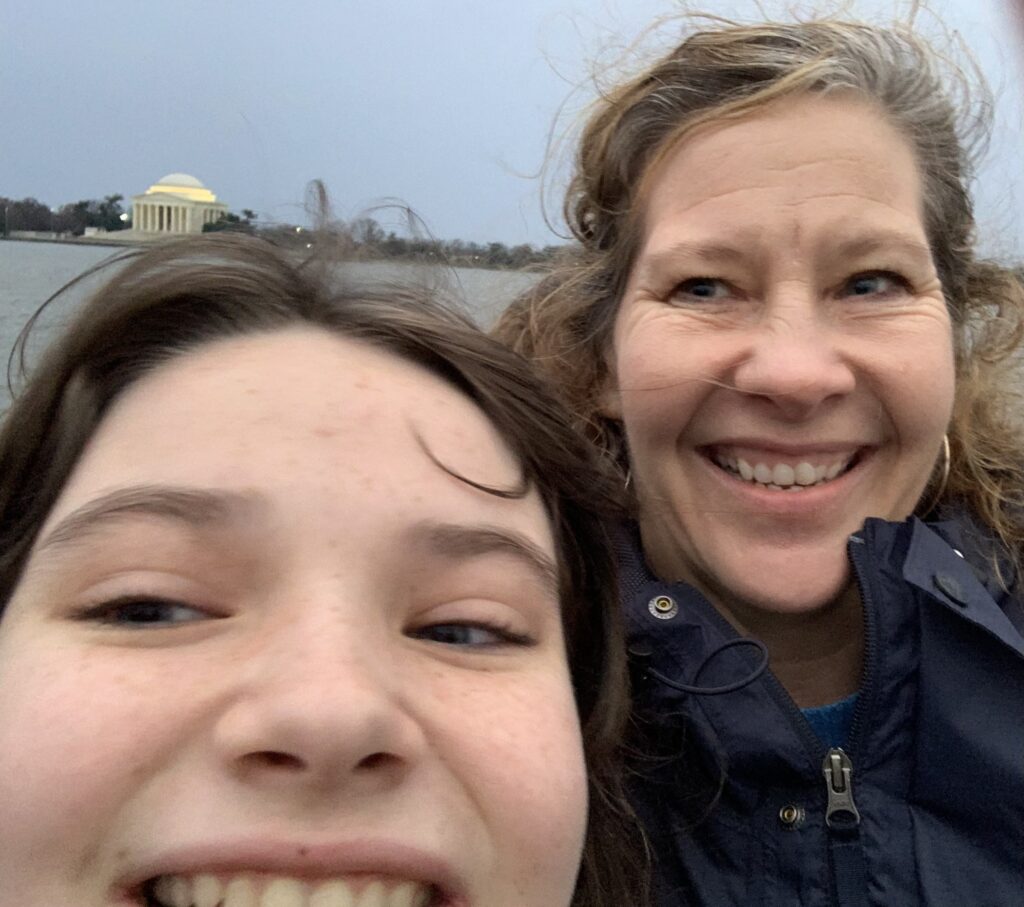If you live around DC, Spring means cherry blossoms – the flowers and the festival celebrating them.
This year, we have an enhanced interest in cherry blossoms since our family will be in DC as the cherry blossoms start to bloom, then one of our family members will make their way to Japan – the epicenter of cherry blossom celebrations – as the cherry trees around Tokyo are likely to go through their bloom season.
We did our first check of the cherry blossoms around the DC Tidal Basin a few days ago – here’s what they look like now…
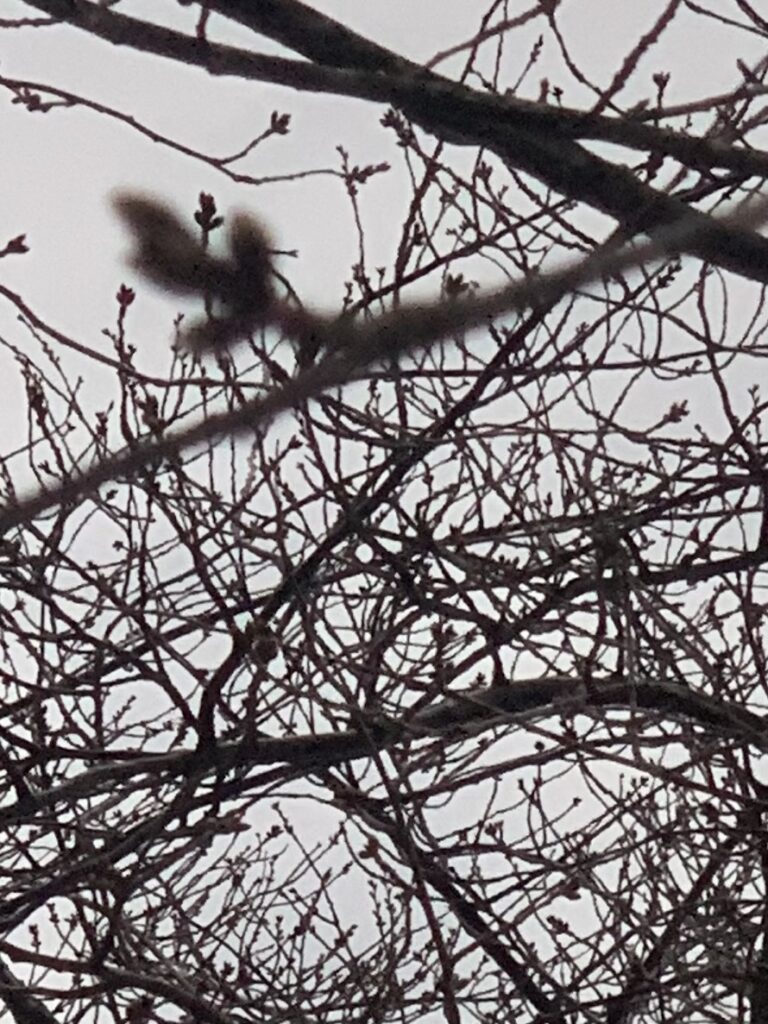
We’re planning to check on them about once a week over the next month – then our family member will compare the DC blooms with those in Tokyo – and we’ll share our findings and photos. It’s a great neurodiverse (or neurotypical) family activity because you might catch a kite or music festival breaking out as part of the month-long Cherry Blossom festival, the annual occurrence has layers of philosophy and history woven into it, and if you want to see the whole collection of 3,700 cherry blossom trees around the basin, you have to exert some energy by walking about a mile and half along peaceful paths. Except in late March when the paths can be overrun with locals and tourists.
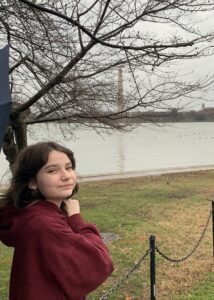
Within a few short weeks, the cherry blossoms will go through a dramatic cycle.
The trees’ buds will explode into bloom, but just a few days later, the flowers will be gone – wilted and fallen off or blown off from rain and winds.
So, what’s all the fuss? Why do people celebrate these short-lived flowers from one end of the world to the other? Here’s why…Five fast facts about cherry blossoms and the DC Cherry Blossom festival:
One: In Japan, the blooming of the cherry trees, called “Sakura,” has rich symbolism: the trees – which have grown in the country for at least 2,000 years – signify the beginning of spring, human life and death, transience, beauty, nobleness, and violence.
Two: Cherry blossoms are celebrated all year long in Japan – they are the country’s unofficial national flower and can be found on the Japanese 100 Yen coin – but for centuries the celebration has been stepped up in the early spring as cherry blossom-treed areas have served as the scenic backdrop for performing arts events, traditional Japanese tea ceremonies, and picnics. Even at night, the celebrations continue thanks to the stringing of paper lanterns throughout treed areas.
Three: Neither Japan nor DC is the “cherry blossom capital of the world.” That distinction belongs to Macon, GA, because of its more than 300,000 cherry trees.
Four: One woman’s dogged pursuit led to the planting of the cherry trees along the DC Tidal Basin.
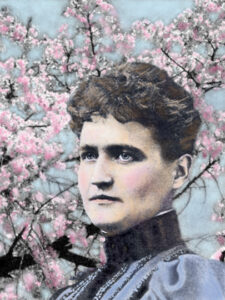 Starting in 1885 (the year of her first visit to Japan to 1905), world traveler, writer, and diplomat Eliza Ruhamah Scidmore tried for more than 20 years to get one government official after another interested in funding and planting cherry trees in DC. Finally, in 1906, one official agreed to import seventy-five flowering cherry trees and twenty-five single-flowered weeping trees from Japan. But Eliza wasn’t done yet.
Starting in 1885 (the year of her first visit to Japan to 1905), world traveler, writer, and diplomat Eliza Ruhamah Scidmore tried for more than 20 years to get one government official after another interested in funding and planting cherry trees in DC. Finally, in 1906, one official agreed to import seventy-five flowering cherry trees and twenty-five single-flowered weeping trees from Japan. But Eliza wasn’t done yet.
Five: Because of Eliza’s continued efforts – even establishing a correspondence with first lady Helen Taft, in 2009, the mayor of Tokyo agreed to donate more than 2,000 cherry trees to be planted in Washington DC.
Six: The trees arrived in DC in 2009, BUT they were found to be diseased and had to be burned. To celebrate the friendship between the U.S. and Japan, the City of Tokyo donated an additional 3,020 cherry trees, which arrived and were planted in DC in 1912.
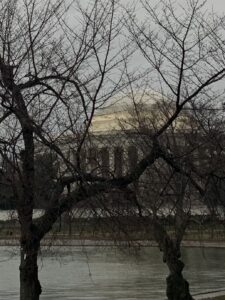 Seven: In 1938, as construction of the Jefferson Memorial – now located along the Tidal Basin – was about to get underway, members of the Daughters of the American Revolution (DAR) chained themselves to cherry trees that were slated for removal because of the project.
Seven: In 1938, as construction of the Jefferson Memorial – now located along the Tidal Basin – was about to get underway, members of the Daughters of the American Revolution (DAR) chained themselves to cherry trees that were slated for removal because of the project.
President Roosevelt served them lunch – which included many cups of coffee and iced tea – and when they unchained themselves to visit the restroom, he had many of the trees removed.
The rest were removed in the middle of the night.
Eight: This year’s DC Cherry Blossom festival includes four weeks of activity – from March 15 – April 14 – throughout Washington, DC, Maryland, and Virginia. Activities include live American and Japanese music and cultural performances at the Tidal Basin (March 23 – April 7), a multi-park kite festival (March 30), “pink” tie formal event (March 15), and a “petapalooza” event (April 6) along the DC waterfront.
Nine: Cherry blossom watchers in DC tend to focus on “peak bloom” – which is when 70 percent of the blossoms have bloomed. It lasts for one day. Peak bloom is not to be confused with full bloom, also called the blooming period, which lasts for several days.
Ten: Some of the more than 300 types of trees that produce cherry blossoms also produce cherries but they’re too sour for people to eat (birds like them). The cherries people eat instead grow on cherry fruit trees.
Happy blossom watching!
